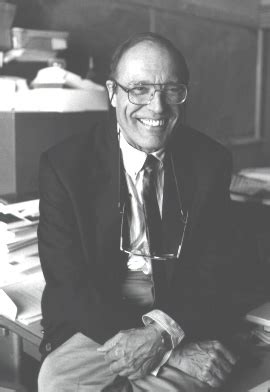In the swirling vortex of academic literature and professional guidance, few pieces have withstood the test of time as effectively as Gian-Carlo Rota’s reflections. His elucidations capture not only the nuances of succeeding in the realm of mathematics and science but also offer broader lessons that extend well beyond their original audiences. Rota’s thoughts have become a staple discussion topic, returning with notable regularity in forums and academic circles alike. Indeed, they persist through the continuous sharing and analysis they receive, like seasoned classics of intellectual thought.
First published in the late ’90s, these lessons carry the weight and wisdom of years and provide an intimate look at the trials and tribulations of academic life. One of the prominent themes Rota explores is the concept of keeping challenges ever-present in one’s mind. This idea has been reflected upon by many, including renowned figures like Richard Feynman. Feynman’s method of constantly engaging with problems, maintaining a constant passive dedication, resonates deeply in today’s fast-paced environment where attention spans are frequently tested. As one commentator noted, sustaining such constant focus is easier said than done but remains a rewarding endeavor nonetheless.
Further developing this idea, another insightful participant reaffirmed the practicality of maintaining a balance between problems and solutions in one’s mental arsenal. The suggestion to keep a few significant issues along with their potential solutions active in your mind appears to be a strategic move. This constant interplay between problems and solutions enables one to react effectively when either a new problem or innovative solution presents itself. To quote a modern variant, ‘Keep a few significant problems in your mind…and also keep a few significant solutions’ effectively sums up a proactive, ever-ready approach to problem-solving.
However, clarity in communication forms another central pillar of Rota’s teachings. Crafting ‘Informative Introductions’ and ensuring that one’s work is accessible and motivating is a recurring emphasis in Rota’s essays. Drawing parallels to modern guidance on effective communication, Larry McEnerney’s lecture The Craft of Writing Effectively suggests similar principles. Both underscore the importance of engaging the audience right from the beginning — a must for anyone seeking to extend their readership beyond the immediate, highly specialized community.
Rota also touches upon the etiquette of aging in academia — a delicate, often unspoken topic. As he poignantly observes, reaching a certain age transitions one from being an active participant to an institutional figure. This shift necessitates a significant adjustment in expectations and self-perception. Commenters resonate deeply with Rota’s insights on aging, noting the difficulty but importance of embracing this inevitable transition. There’s a broader life lesson here in finding peace and purpose in different stages of one’s career and personal life.
Furthermore, Rota’s practicality extends to teaching methods and educational philosophies. The debate on teaching styles — be it a hands-on, interactive approach or a more traditional, lecture-based methodology — is enduring. A particularly potent discussion highlighted by a user examines the pros and cons of adopting university-level teaching techniques from an early stage. The consensus suggests that while such methods may be advantageous for highly motivated and talented students, they might overwhelm others, underlining the necessity for differentiated instruction based on learner needs.
Moreover, when Rota speaks of ‘Running overtime’ as a critical misstep in lecturing, it echoes a common frustration experienced by many. Overloading students or professionals with too much information in one go, particularly at inopportune times, can undermine the value of the teaching itself. As one commentator quipped, professors explaining difficult topics in the five minutes before lunch exemplify why this is such a critical error. Effective time management in teaching is not merely a skill but an art that considerably impacts student engagement and absorption of material.
Finally, Rota’s multidisciplinary approach to knowledge, urging individuals not to confine themselves to narrow specializations, speaks to the holistic development of any professional. The most competent and adaptive minds frequently harness diverse fields to solve complex problems. Cross-disciplinary flexibility doesn’t just bolster one’s problem-solving toolkit; it enriches one’s perspective, making them invaluable in an increasingly interconnected world. Reflecting on personal anecdotes, one user’s story of transitioning from another discipline into academia vividly illustrates the enriching nature of varied intellectual pursuits.
Conclusively, Gian-Carlo Rota’s timeless wisdom continues to serve as a beacon for those navigating the multifaceted challenges of academic and professional life. His reflections offer rich, practical insights, prompting us to maintain continuous engagement with complex problems, emphasize clarity in communication, adaptively teach, and embrace aging as a gracious transition. More than anything, Rota reminds us of the crucial importance of maintaining a broad intellectual horizon, blending the rigor of specialization with the flexibility of interdisciplinary knowledge. A synthesis of these approaches perhaps represents the ideal pathway toward lifelong learning and personal fulfillment.


Leave a Reply